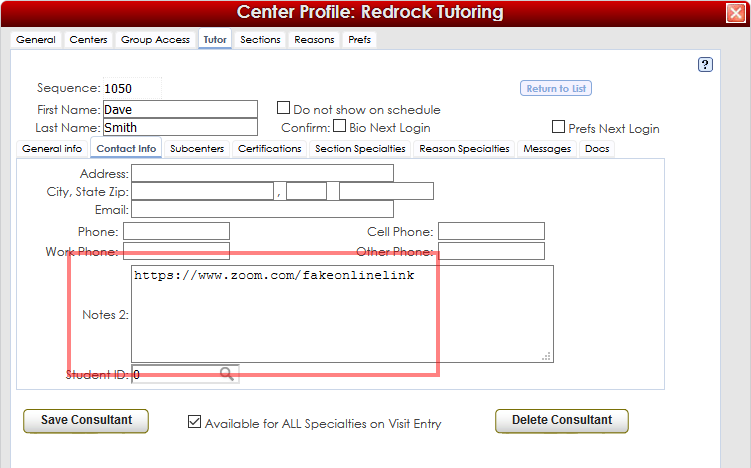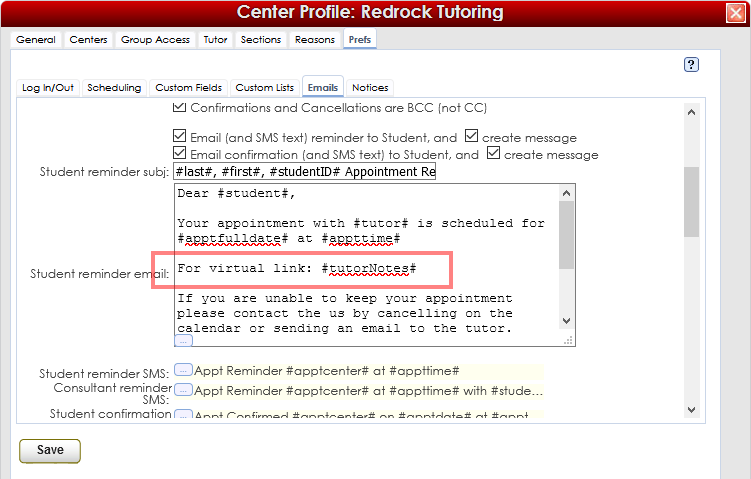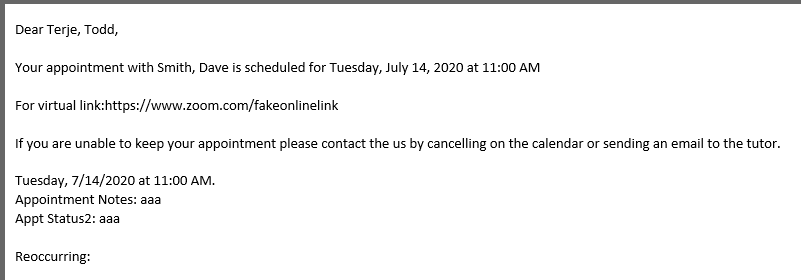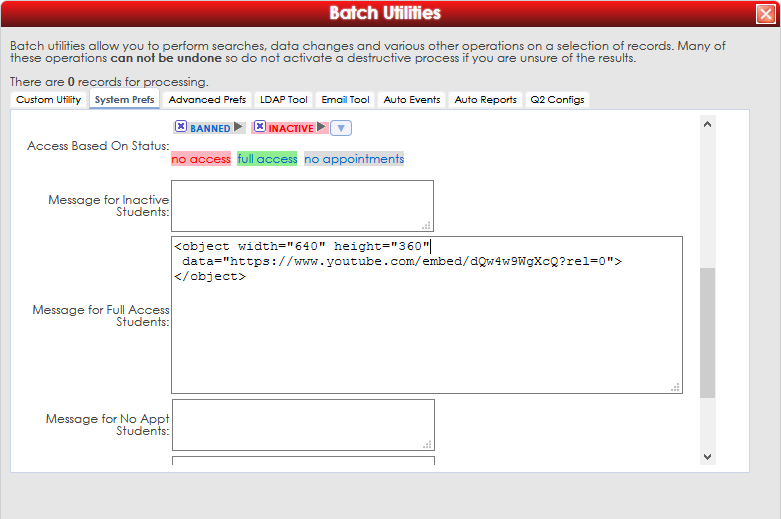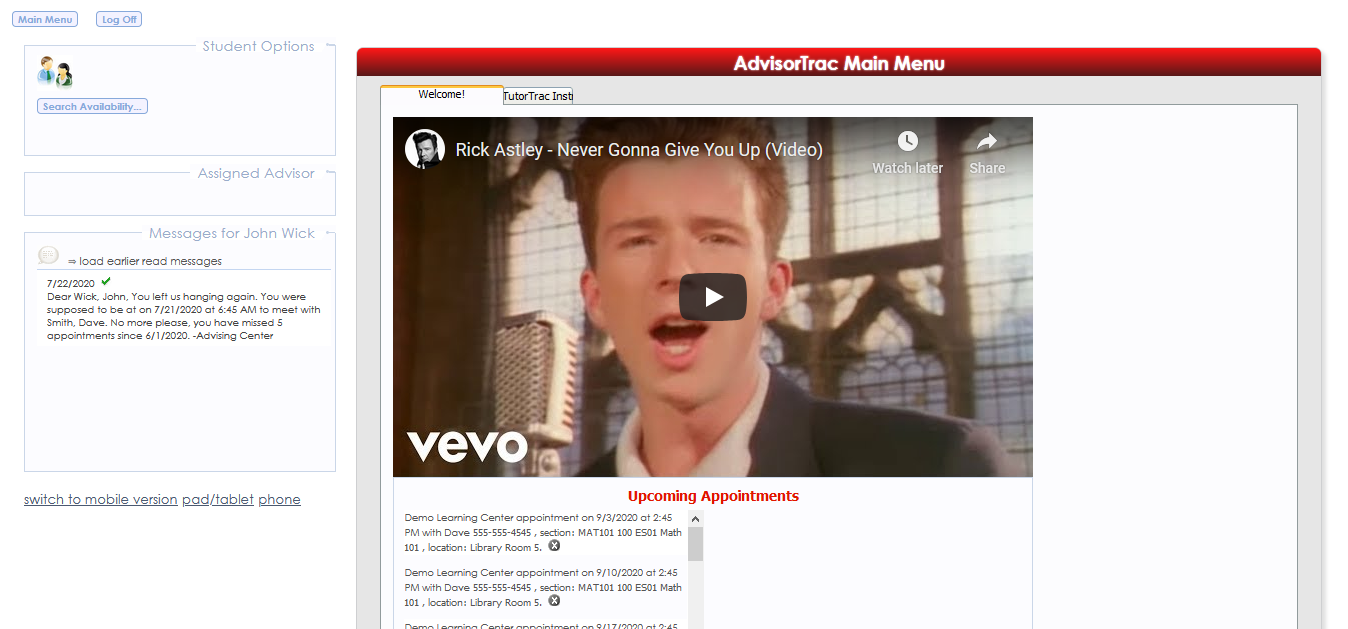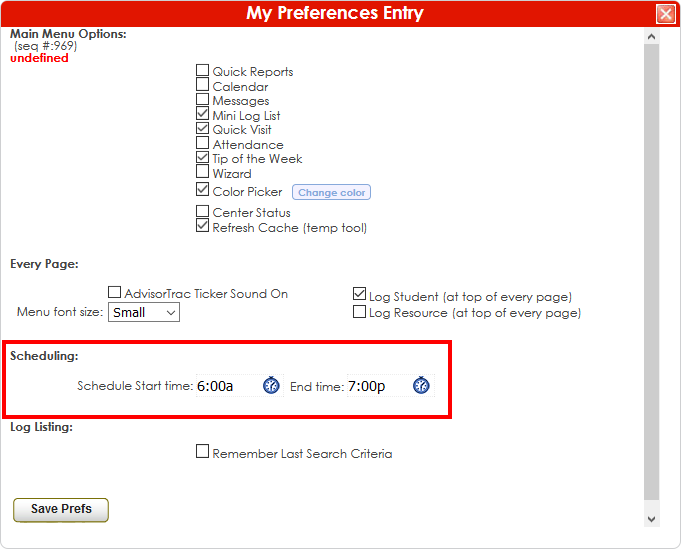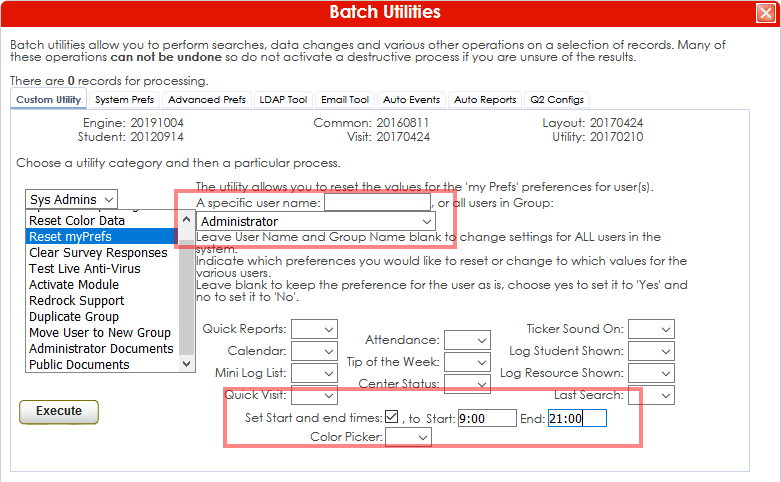FAQ: Difference between revisions
From Redrock Wiki
No edit summary |
No edit summary |
||
| Line 381: | Line 381: | ||
[[File:8856756745.png|border|76px]] [[File:1t335h3353j53.png|border|600px]] | [[File:8856756745.png|border|76px]] [[File:1t335h3353j53.png|border|600px]] | ||
</div> | </div> | ||
==Reporting FAQs== | ==Reporting FAQs== | ||
Revision as of 22:45, 23 November 2021
This list of Frequently Asked Questions (FAQs) has been compiled through the emails and phone calls received by the Redrock Support Team. These questions and answers are not organized in an ordered format, but rather as a collective group of questions that you can quickly scan and search.
Technical and Installation FAQsHow do I install the software?The Trac software will be available for download after purchase has been made. Contact Support@Go-Redrock.com for the link to download the latest release of the software. The download link will provide a complete installation package, including the web server and database. On a Windows server, the download will be a self-extracting .exe file that will install the Trac application on the C: drive. What are the Server Requirements?The Trac System does not require high-end or server-grade hardware/software to operate. The full system requirements can be found in the hyperlink above. Can the server be assigned a DHCP IP Address?No, the Trac application requires a static server IP Address. The IP Address is used to check your installation code and also to access your Trac application web interface. Can I install the Trac application on multiple computers?No, your Trac application will only be installed on a single computer. This computer will be the server (even if it is not 'server' hardware), containing the database and application in the same directory. Users can access your Trac application from any web-enabled device on the network. As a web-based application, there is no need to install the software on any other computer. Can I install the Trac application on a virtual machine?Yes, the Trac application runs fine on virtual servers. Why does the Trac application quit whenever it is started?Windows Server 2003 and newer operating systems utilize a software technology called Data Execution Prevention (DEP) that performs additional checks on memory to help prevent malicious code from running on a system. The primary benefit of DEP is to help prevent code execution from data pages. Your Trac system utilizes this memory for some execution of scripts and will need to be set up as an exception in your Windows DEP settings. Can the Trac application be integrated with our campus Single Sign-on?Yes, the Trac application can integrate with your existing Single Sign-on configuration using CAS, SAML, or LDAP. This integration is customized by Redrock Software. Redrock Software would work with your campus IT Dept to fully integrate the Trac application. How can our Trac website be secured?Redrock Software recommends utilizing a 3rd party application named Stunnel to encrypt the data between the web server and the users' web browsers. Stunnel is a free, open-source SSL wrapper that is installed on the server with the Trac application. The Trac application connects with Stunnel without encryption on the local server. Then, Stunnel encrypts the data and connects with the users' browsers across the network. Can we run our Trac site from an IIS web server?No, the Trac application utilizes a custom web server developed by Redrock Software. The web server was developed to integrate fully with the built-in 4th Dimension database. Can we run our Trac site from an Apache web server?No, the Trac application utilizes a custom web server developed by Redrock Software. The web server was developed to integrate fully with the built-in 4th Dimension database. Can our Student Information System integrate with our Trac application?The Trac application can import data from any source as long as it is provided in the correct format. The data needs to be provided in a flat file format. .TXT, .CSV, .DAT, .LIS, and .XML are examples of valid file formats. The Trac application will not import data from Excel files. The data must be saved in a flat format. The order and delimiter of the fields is completely up to your preference, however, the format, order, and delimiter of the fields must remain consistent with every import. Redrock Software recommends that the student demographic data be imported with the students' course registrations and course instructors. Can the Trac application run as a service on the server?Yes, the Trac application can be run as a service so a user is not required to remain logged on to the server for the Trac application to run. The Trac application is installed as a service by utilizing a small application named Winserv. See the article, Install the Trac Application as a Service, for more detail to install the service with the Winserv utility. What are the steps to allow students to book an appointment online?The Trac System allows students to book appointments online and join online sessions via any conferencing software that supports static URLs. More information on what's required to configure these features can be found by clicking "Expand." What are the steps to allow students to book an appointment online? IT
Trac Administrators
User FAQsCan the remote tutoring link be included in the confirmation email?Due to how the Trac System keeps track of remote tutoring visits, this is not possible without limitations. When the "Join Online Session" link is clicked by the student, the Trac System creates a visit record and marks their appointment as attended. If the link is sent in an email, it would not be possible for the Trac System to know when the link is clicked. However, there is a workaround available if this is absolutely necessary. Click "Expand" for more information. How do I add consultants' online links to the confirmation/reminder email? Due to how the Trac System keeps track of remote tutoring visits, this is not possible without limitations. When the "Join Online Session" link is clicked by the student, the Trac System creates a visit record and marks their appointment as attended. If the link is sent in an email, it would not be possible for the Trac System to know when the link is clicked. We do have a workaround available for including these links in the confirmation email, but the downside is that consultants/admins will need to either log the student in/out for the visit, or create a quick visit after the fact. If you're okay with this limitation, simply follow the instructions below: These options can be found by going to Trac Navigation > Search Glass > Center Profiles > [Your Profile]
Here's what our example email would look like: What is a Profile?A Center Profile allows you to set up users, consultants, groups, and centers that share preferences and settings. The Groups will establish group privileges and settings for users and consultants. While the individual centers share the global profile settings, the groups and users can be restricted to accessing information by to each center. Why would I need another Profile?Another Profile would be needed when multiple centers cannot agree on the settings within the same Profile. There are three key areas of settings in which centers might have a conflict: Log In/Out, Appointment Scheduling, and Email Settings. Can I add a Profile to my existing Trac system?Yes, a Profile may be added to an existing system at any time. A Profile has an additional cost. You will need to contact Redrock for assistance in purchasing and activating a new profile at Sales@Go-Redrock.com. How do I set up another Profile?Once your new profile has been purchased and activated, go to Trac Navigation > Search Glass > Center Profiles. From the Center Profile Listing, choose Create New from the List Options menu. Next, you need to name your Center Profile and save it. When you save your Profile, your Profile is assigned a Sequence number. Finally, email that Sequence number to Redrock Support<Support@Go-Redrock.com>. Redrock Support will generate a unique Activation Code for your Profile and you can enter that code to activate your Center Profile. How do I set up multiple centers?A Centers tab appears at the top of your Profile Entry screen. This tab gives access to the unique Centers that are set up for the Profile. A Center in the Trac application is a unit that has unique Consultants, Schedules, Visits, and Reports. The Centers will most often be setup according to unique departments, however, you may set up your Centers according to any convention that fits your needs. How do I create a location?You can create locations by going to Trac Navigation > Search Glass > Center Profiles > [Your Profile] > Prefs > Scheduling > Appointment location choices. Add each location to a new line, and save once you're done. Click the hyperlink above for more information. How do I ask a custom question on appointment entry?You can create a custom appointment question by going to Trac Navigation > Search Glass > Center Profiles > [Your Profile] > Prefs > Scheduling > Custom Appointment Field. More information can be found in the hyperlink above. What is a Sequence Number/ID and why is it important?Sequence IDs are numbers that are assigned to a variety of different elements within the Trac Software. These numbers are automatically assigned and remain static so that when other information that is associated with the element (i.e. name, spelling, etc.) changes, there is no confusion as to which records are associated with each other. One example would be if a Subcenter named: “The Writing Center” were to change their name to “The Reading and Writing Center” the Sequence ID would remain the same thus allowing previous visit data to remain attached to it. How do I set our school logo?The Trac system provides a place for a logo image to appear as a banner in the upper-right corner of your Trac system web pages. The banner is a .GIF image file named SchoolBanner.gif and is placed on the Trac server in the /Webfolder/TracWeb40/ folder of your Trac application installation directory. Redrock Software recommends an image height no greater than 75 pixels for your banner. Consider the users' screen resolutions when considering the width of the banner image. Instructions for uploading an new logo can be found in the hyperlink above. How do I change the Trac colors?A Trac System Administrator can set up the default colors of the titles and title bars on the Trac system windows. The Trac System Administrator can set these colors from the System Preferences found in the Utilities & Prefs. The campusColorData preference provides a setup utility to select and test colors before implementing the colors for your Trac System. How do I embed a Youtube video on the Trac System?It's possible to embed a Youtube video in almost any HTML supported text box in the Trac System with the <object> tag. Click "Expand" to view more information.
https://www.youtube.com/watch?v=dQw4w9WgXcQ
https://www.youtube.com/embed/dQw4w9WgXcQ?rel=0
<object width="640" height="360" data="https://www.youtube.com/embed/dQw4w9WgXcQ?rel=0"> </object>
How do I change the login instructions?Any user that logs into your Trac system will log in through the same screen, so the login instructions are global to your Trac system. The instructions are found in the System Prefs. The name of the pref is MsgsAll. The instructions can be formatted with HTML to customize your fonts, colors, and sizes or add links and images. How do I set up a nice URL or website to access the Trac system?Your Trac application serves the Trac system web pages from the IP Address of the server. Your Trac system will be accessible via web browser by entering the IP Address as the URL. You can set up a domain name for that IP Address through your network administrator. When your site has a domain name, you will be able to access your Trac system by a recognizable address like https://Trac.College.EDU. How do I load student and course data to my Trac system?Your Trac system can import student and course information via ASCII flat text files (usually students.txt and courses.txt). You must obtain these files from your student information system. Provide a sample of the file to Redrock Support, and you will receive a script that imports the data from the flat file to your Trac system database. So long as your file format remains the same, you will be able to continue to import updated student data to your Trac System. The entire process can be automated so you don't even need to do anything. How do I activate courses for a new term/semester?Activating new courses is a multistage process. Once the new courses are imported, you must adjust the term code within your System Prefs, activate the courses for each Subcenter, and transfer the Section Specialties for your consultants. Click on the Link for detailed instructions. If you have recently set up an account and notice that your screen looks incredibly bare, you’ll need to save your personal preferences within the MyPrefs settings. Click on the Trac-Man Icon, scroll down and select My Prefs. You will notice that many preferences are already checked, but they do not take effect until the ‘Save Prefs’ button is clicked. Make any adjustments that you’d like and click ‘Save Prefs’. Once you click ‘Save Prefs’, go back to the Main Menu and refresh the screen to see the utilities. How do I change my Sys Admin password?To change your Sys Admin password, go to Trac Navigation > Search Glass > SysAdmin Group > User List > [Your User]. Here, you can change and confirm your password, then click save to apply changes. How do I notify instructors when their students are visiting?The Trac System has a couple of standard functions in place to allow you to contact the faculty when their students visit your center(s) for assistance. You can ask the students to check a box to email their instructor as they sign out of a visit. You can ask the consultants to enter their session notes and then click a button to email the visit information and notes to the instructor. You can even automate a process to run nightly or weekly and email the faculty a list of all of their students that have visited. Redrock Support will assist you in setting up these options. How do I set up emails from my Trac system?The Trac system has a global setting to store a value for an SMTP Mail Server. The setting is found in the System Preferences. The preference name is MAILSERVER. It can be entered with a domain name or an IP Address. The mail server needs to allow anonymous mail relay from the Trac server IP Address. An incorrectly entered mail server can cause your Trac system to operate very slowly as it attempts to connect to a non-existent mail server when scheduling or cancelling appointments. How do I send an email to a group of students?The Trac Navigation allows you to search students very quickly. When you have searched and found a selection of students, you can choose to send an email to this entire group at once. You can do so by choosing to Send HTML Note from the List Options menu. Enter your email subject and message and then choose if it is an email or just a note within your Trac system. Click Send Message to complete the message and send it to the group of students. How do I email students a reminder of their appointments?Each Center Profile has its own unique preferences and settings. The Email tab in the Center Profile Prefs allows you to set up and format email reminders for appointments. Reminders may be sent to students, consultants, or both. The reminder message is formatted differently for the students and consultants. A student can receive a reminder for each appointment that they have scheduled the next day. A consultant can receive one email that details all of their scheduled appointments for the next day. Additionally, the Trac system has a global setting that controls when email reminders are sent. The Automated Events tab in the Utilities and Prefs contains the timing settings and activation of the Email Reminders. How do I email consultants a reminder of their appointments?Each Center Profile has its own unique preferences and settings. The Email tab in the Center Profile Prefs allows you to set up and format email reminders for appointments. Reminders may be sent to students, consultants, or both. The reminder message is formatted differently for the students and consultants. A student can receive a reminder for each appointment that they have scheduled the next day. A consultant can receive one email that details all of their scheduled appointments for the next day. Additionally, the Trac system has a global setting that controls when email reminders are sent. The Automated Events tab in the Utilities and Prefs contains the timing settings and activation of the Email Reminders. How do I receive a copy of the emails that are sent to students?Each Center Profile has its own unique preferences and settings. The Email tab in the Center Profile Prefs allows you to configure email settings. You can configure a Center email address that will be used to send email confirmations and reminders to the students. There are checkbox settings to allow this same email address receive a copy of the appointment confirmations, reminders, and cancellations. Can I watch/follow lists that I have created within the Trac Application?Yes. It is possible to watch/track lists with the Watch List Indicator. The Watch List Indicator allows you to assign a colored dot to the list of your choosing which shows up next to the name of the students on your list. You can set who can see the indicator as well as where it shows up. When the indicator is hovered over, it will give you a the name of the list associated with it. Students can be members of multiple lists and the Watchlist indicator can follow up to 9 different groups. What is an availability?An availability is an appointed time that a consultant offers for student appointments or drop-in visits. What is an appointment?Record that a student reserved a time to meet with a consultant. An appointment may be assigned a status to identify the outcome of the reserved time. What is a visit?Record that a student utilized the services offered at your center(s). Visits may be logged in real time by asking the student to sign in when they arrive and sign out when they leave or they may be recorded after the fact. What is the difference between a visit and an appointment?An appointment is a reserved time for a student to meet with a consultant, while a visit is the actual act of a student coming in to a center and receiving services. If an appointment is made and a student attends, this is considered a visit; however, if there is no appointment scheduled and a student comes in for a drop in, than this is also a visit. Therefore, if appointments and drop-ins are available it is likely that when reports are run, there will be more visits than appointments. Can I book my appointments in Outlook?When an appointment is scheduled the Trac application can send a confirmation email. Included in the email is an iCal attachment. This attachment will display appointments in your Outlook calendar as meeting invitations. iCal Integration with your Trac system - Why is this a one-way relationship? The integration is one-way, but it's important that a user understand that two-way integration is not really feasible. AdvisorTrac, for example, allows for appointments to be scheduled between an advisor and a student. These appointments can be scheduled by the student, advisor, front desk staff, student workers, administrators, or any number of other users in the system. That means that correct levels of access to the schedule needs to be provided to the proper users. There are also many other factors that affect the scheduling, including rules for scheduling appointments, individual or group appointments, reasons for appointments, and so on. The AdvisorTrac system has a record of the advisor and a record of the student and will use scheduling rules and permissions for users to schedule the appointments. When an appointment is booked in the AdvisorTrac system, the basic information of the appointment (date, time, duration, student, advisor, reason, etc.) is passed in an iCal attachment to the user's Outlook calendar. Outlook does not enforce rules or include permissions for many users to search and interact with advisor schedules to book appointments. When an appointment is booked, Outlook has no idea of who the student is or who the advisor is or if there is a rule that should have prevented the appointment. Outlook cannot communicate all of the necessary information, provide the level of access, or follow a basic set of scheduling rules as AdvisorTrac can, so the two systems may not speak directly one with another. How do Trac appointments integrate with Outlook?When an appointment is scheduled the Trac application can send a confirmation email. Included in the email is an iCal attachment. This attachment will display appointments in your Outlook calendar as meeting invitations. Why do I need to specify when I am available?Creating an availability is important in allowing others to book appointments for you. If you do not create an availability, appointments might be placed in a schedule at random times, allowing for errors such as double booking to occur. With an availability, session times can be grouped together and managed as they are booked. If you offer drop-in tutoring, this will allow for other staff, students and/or faculty to identify when services are available. Can I block times from my schedule?Yes. Blocking times can be done in two ways. First an individual consultant can create an availability block by creating an availability and then unchecking the "is availability" checkbox in the top right corner of the availability creation window prior to saving. The second method is creating a block for an entire center which can only be done by administrators in the Center Profile> Centers tab. How do I block times that my school/center is closed?To create a center block you must have admin privileges to the Center Profile. In the Center Profile you will go to the Centers tab and click on the ID number of the center you would like to create the block for. Click on the "new" button in the center of the page and enter the details of the block. Note: if you would like to create a block for all center you will need to choose the Center Profile and check the box "is Global to all Subcenters?" located above the description field. How do I move an appointment from one consultant to another?Moving an appointment can be done by identifying the appointment you would like to move and accessing the "Move to" feature. This will allow you to the move the appointment to another consultant, day, or time. What do I do when a consultant calls in sick?If a consultant calls in sick, you can move the appointments to an available consultant with the 'Move To' feature within the appointments entry window. Can I delete or change a large group of visits all at once?Yes, this can be accomplished with the Change Value utility. However, due to the potential destructive result of this kind of batch change, we recommend that you reach out to Redrock Software directly for assistance. How do I survey a group of students?Surveying a group of students is simple if you have SurveyTrac. SurveyTrac affords you the ability to create an unlimited number of surveys with an unlimited number of questions that can be given on student entry, exit, or sent out within an email. Students can be emailed surveys individually or you can pull up a specific group of students and email the survey all at once. For more information on SurveyTrac, contact us to set up a demo. Why isn’t a consultant showing up on the schedule?In order for a consultant to show up on the schedule, there are two settings that must be in place. First, the consultant must be assigned to the Center Profile in which the Center resides and second, within the Consultant Profile under the Subcenters tab make sure to select the Subcenter that should have the Consultant on the schedule. Consultants can reside on multiple schedules and within multiple Center Profiles if you choose. Why can't a consultant/user view the schedule?There are a couple of permissions and settings that need to be in place to enable a consultant/user to see the schedule. These permissions can be found in the Center Profiles under the user group settings. How can staff/consultants change/reset their home screen?Your Staff can modify the visible elements of their home screen by going to Trac Navigation > Trac-Man > My Prefs. More information in the hyperlink above. Should I delete past consultants that are no longer working with us?No. There is no safe way to delete a consultant. What we recommend is marking the consultants that you wish to remove as ‘Inactive’. This will allow previous records to remain attached to that consultant and make for the most accurate reporting possible. To ‘Deactivate’ a consultant, simply navigate to the Consultants (tutors, advisors, counselors, etc.) tab within your Center Profiles and uncheck the box next to their name. Should I delete Subcenters that we no longer use?No. There is no safe way to delete a Subcenter. We recommend marking the Subcenters that you wish to remove as ‘Inactive’. This will allow previous records to remain attached to that Subcenter and make for the most accurate reporting possible. To ‘Deactivate’ a Subcenter, simply navigate to the ‘Centers’ tab within your Center Profiles and uncheck the box in the middle of the frame under the term ‘Active’. How do I change the time range on my schedule?To change the schedule time range for yourself: Go to Trac Navigation > Trac Man icon > My Prefs. Change "Schedule Start time: __ End time: __" to your desired times, then save. For more information, and to change the time range for everyone, click "Expand." To change the schedule time range for yourself Go to Trac Navigation > Trac Man icon > My Prefs. Change "Schedule Start time: __ End time: __" to your desired times, then save.
Go to Trac Navigation > Trac Man icon > Utilities and Prefs > Custom Utility > Sys Admins category > Reset myPrefs.
You'll want to change the '...or all users in Group' setting to your users' group (or leave blank for everyone). Then at the bottom of the screen, check 'Set Start and end times', and input the time range you'd like their schedules to use. This uses military time, so for example, you'll want to use '9:00' to '21:00' for 9:00am to 9:00pm. Click "Execute" to save. Reporting FAQsCan reports be run automatically?Yes, reports can be run automatically with our automated reports feature. Reports can be run in a variety of increments and can be delivered via email to an individual or a group. How do I run a Supplemental Instruction (SI) Report?Running an SI Report is an extremely efficient way to identify the usefulness of your SI Program. Running the report is simple. Click "Expand" for instructions. Follow the steps below to run an SI Report at the end of the semester: Be sure that grades have been reported by faculty and imported from your Student Information System. 1. Log in as a user/consultant that has appropriate access to the Registrations reports and Subcenter information needed to execute the SI Report. 2. Click on the TracMan Icon in the upper left and select ‘Reports’. 3. From the dropdown menu select the ‘Registrations’ category. 4. From the new list of reports choose the ‘SI Comparison’ report. 5. After the options load, choose a center to report on. 6. Select the ‘Visit Search’ link and enter the specific Section within the ‘Section’ field. 7. Select the ‘Registrations Search’ link and enter the specific Section within the ‘Course ID’ field. (note: the Visit Search and Registrations Search sections must match exactly). 8. Choose your date range (i.e. this semester). 9. For the ‘SI Group is:’ option, select ‘Visited’. 10. Adjust the passing and non-passing grades to meet your standards. (note, these must be in the correct format or they will generate an inaccurate report. Do not place any spaces after commas or between grades). (Good Example: a,a+,a-,b,b+,b-) (Poor Example: a, a+, a - , b , b +, b) 11. Adjust the ‘Affects of SI on Visits Breakdown’ to your preference. Once again, pay close attention in following the proper formatting. 12. Complete filling in the settings to meet your preferences and select ‘Generate’ What are the differences between the “Students/Visits by??”, “Visits/Students by??”, and “Appointments/Students by??” reports?The primary difference is what the report is using as its logic to run the report. The “Students/Visits by??” report will provide the total number of students and visits grouped in a variety of ways; the “Visits/Students by??” report provides visit data through a variety of fields; while the “Appointments/Students by??” displays appointment data for your subcenter(s). The Appointments/Students by ?? report displays Appointment data for your subcenter(s). Information can be organized and sorted via the “Group Appointment By” and “Group 2” fields. For each group selected, the dates and times are listed as well as Appointment status (attended, cancelled, missed), student, and subject. The report can be regenerated for a specific center, an individual student, group of students, an individual Consultant, or for different date and time ranges. Additional fields can be added with regards to Student, Appointment, and Visit Information. The Students/Visits by Report will provide a total number of students and visits, grouped by the chosen field on the left. Each field is listed with its associated students, individual student data, number of visits by the student, and total hours of each visit. The Visits/Students by Report provides visit data through a variety of fields. Data can be grouped by two fields of your choice through the Group Visits By and Group 2 fields. Additional Fields can include student ID, name, date, times, subject, reason, and visit notes. Total visits and hours are listed beneath each section. |
